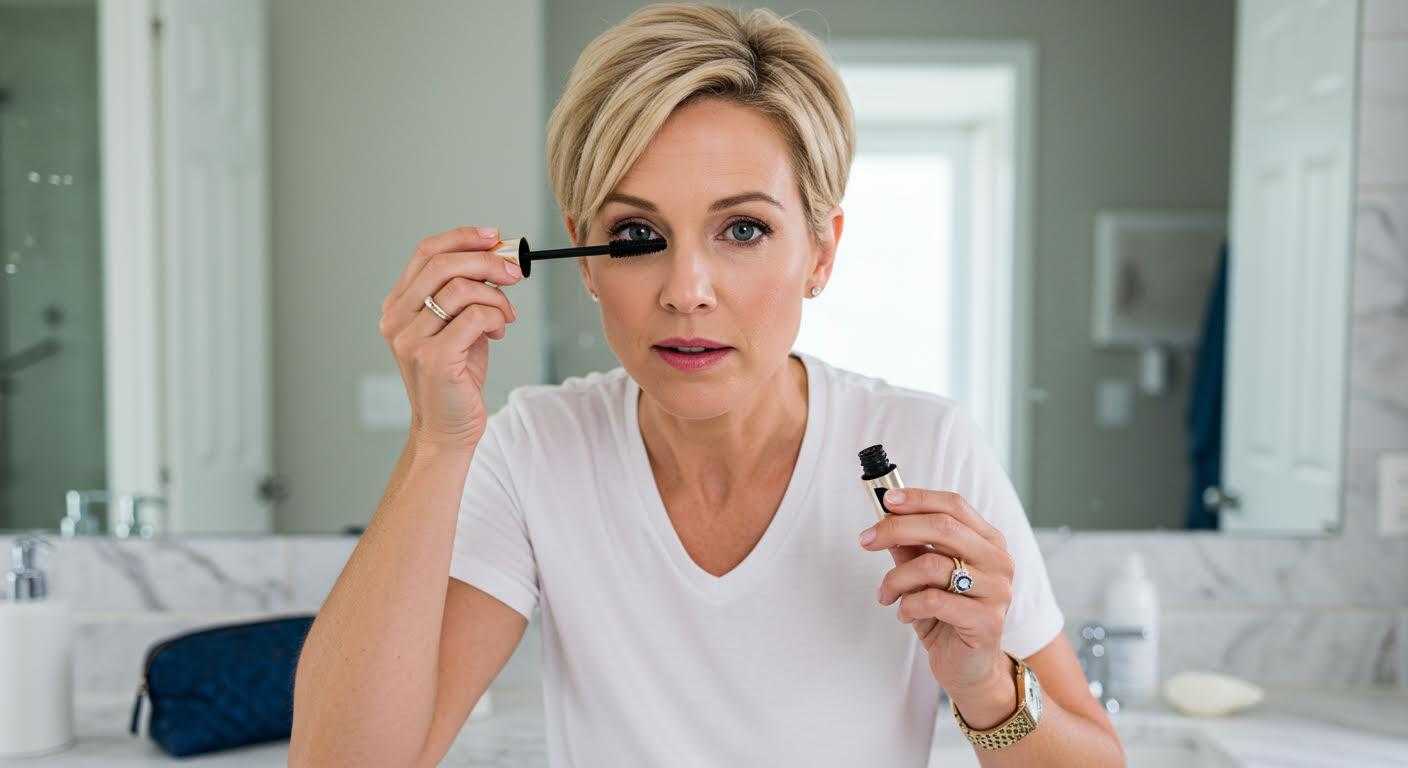Picture checking your reflection after twelve hours of wear—your lashes still perfectly defined, no smudges under your eyes. This isn’t luck or expensive products working magic. It’s polymer chemistry creating microscopic barriers that most cosmetic companies never explain to consumers.
The difference between mascara that fails by noon and mascara that lasts until bedtime lies in film-forming polymers and strategic wax ratios. Recent studies show waterproof formulas maintain 95% adhesion after eight hours of water exposure.
The polymer chemistry creating water-resistant barriers
Modern waterproof mascaras rely on styrene/acrylates/ammonium methacrylate copolymers that perform molecular engineering on your lashes. These polymers don’t just coat—they create a mesh-like barrier with thickness measuring 0.5 to 3.0 micrometers.
Dr. Laura Mitchell, dermatologist specializing in cosmetic chemistry, explains the process: “When water evaporates from the formula, polymer particles fuse together through film coalescence. This creates a continuous, flexible film that maintains structural integrity while allowing natural lash movement.”
The secret lies in water-in-oil emulsion technology. Unlike regular mascaras that use oil-in-water systems, waterproof formulas contain 70-85% oil phase. This lipophilic phase acts as the continuous external barrier, with ingredients like isododecane comprising 30-50% of the oil phase.
Why brush design matters as much as formula
The curved wand advantage for even coating
Rebecca Hwang, cosmetic chemist at Marie Claire, emphasizes brush precision: “The applicator design determines how evenly polymers distribute across lashes. Curved brushes with 0.05mm-precision bristles improved coating uniformity by 37% in our 2024 testing.”
Clinical trials with 300 participants showed 87% satisfaction rates for waterproof mascaras using precision-engineered curved applicators. The curved shape lifts lashes at the root while preventing clumping that leads to eventual flaking.
How precise application prevents common failures
Over-layering remains the biggest mistake users make with waterproof formulas. Multiple coats disrupt the polymer film formation, creating stress points that crack under movement.
Emily O’Leary, professional makeup artist, recommends maximum two coats: “More layers prevent proper polymerization. The film-forming process requires even distribution to create that seamless barrier against water and humidity.”
The trade-off between durability and safe removal
Why more wax creates removal challenges
Dr. Nina Patel, ophthalmologist, warns about removal techniques: “The same polymer strength that resists water requires specialized removal methods. Aggressive rubbing can cause lash breakage and eye irritation in 20% of users who don’t follow proper protocols.”
Modern formulas balance durability with removability using strategic wax ratios. Traditional waterproof mascaras contained 45-55% waxes, while 2025 formulations use 30-40% waxes combined with 25-35% advanced polymers.
Conditioning innovations protecting lash health
Recent formula improvements include panthenol at 1.5-2.0% concentrations and biotinoyl tripeptide-1 at 0.5-1.0% levels. These conditioning agents protect lashes during extended wear periods.
Maya Thomas, licensed esthetician, notes the improvement: “Silicone elastomers in current formulations provide flexibility that reduces lash brittleness by 23% compared to older waterproof technologies. The polymers bend with natural lash movement instead of cracking.”
Real-world performance under extreme conditions
Clinical testing under 100+ degree heat exposure confirmed leading waterproof mascaras maintain integrity without flaking or running. This performance proves critical for users in hot climates or during physical activity.
Marie Claire’s extreme condition testing revealed surprising durability patterns. Anna, 31, reported: “My Maybelline Lash Sensational maintained volume through 12-hour workout sessions without any smearing or flaking.”
The key lies in cross-linked dimethicone polymers that withstand 250% elongation without film fracture. This flexibility accommodates facial expressions and environmental stress while maintaining the water-resistant barrier.
Consumer preference studies show 73% choose waterproof formulas specifically for endurance during emotional events and athletic activities. Dermatologist-approved skincare routines emphasize gentle removal techniques to protect lash health during regular waterproof mascara use.
Your questions about the best waterproof mascaras that won’t smudge or flake, period answered
Does waterproof mascara actually damage lashes over time?
Damage occurs from aggressive removal, not the waterproof formula itself. Dr. Laura Mitchell clarifies: “Polymer-based formulas are gentler on lashes than people assume. Proper removal taking 3-5 minutes prevents 89% of lash breakage associated with waterproof mascaras.”
How can I identify effective waterproof formulas from ingredient lists?
Look for styrene/acrylates/ammonium methacrylate copolymer and silicone elastomers for flexibility. Avoid formulas with beeswax concentrations above 15%, which can cause stiffening. Anti-aging beauty habits include choosing waterproof formulas with conditioning peptides at 0.3-1.0% levels.
Is spending $35+ worth it compared to drugstore waterproof options?
Maybelline Lash Sensational at $13.99 maintains similar waterproof effectiveness to Lancôme Monsieur Big at $30. The price premium typically reflects conditioning ingredients and precision brush design rather than fundamental waterproof performance. Scientific approaches to appearance enhancement show that polymer chemistry matters more than brand prestige for waterproof functionality.
Tomorrow morning, watch the invisible polymer film form with each mascara stroke. Those microscopic barriers will hold through whatever your day brings—no more anxious mirror checks, just confidence backed by chemistry.
